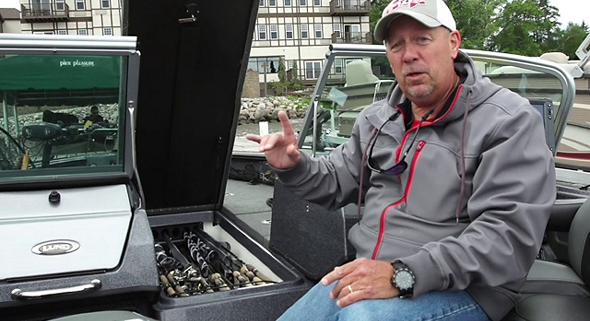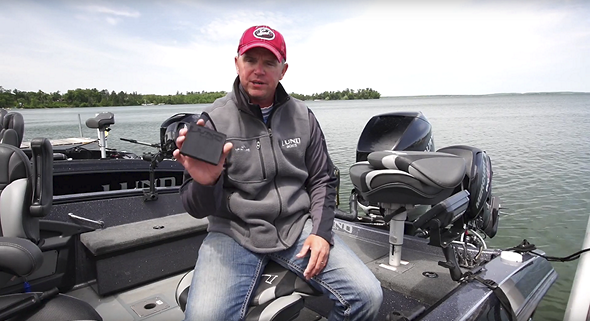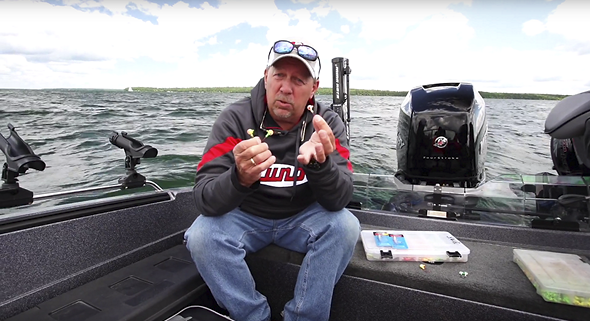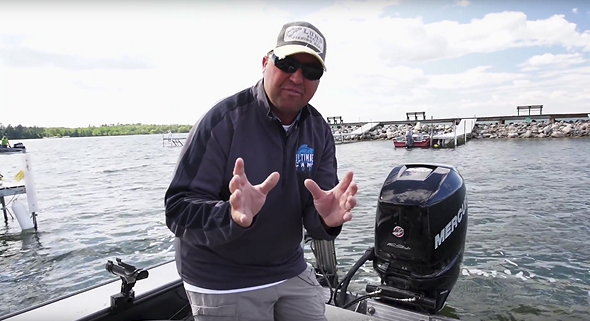How to Choose the Best Fishing Boat for Big Water
Fishing big bodies of water is often a rite of passage for anglers. From the Great Lakes to Lake of the Woods, Winnipeg, and Great Slave, when venturing into the vastness of bigger water, choosing the right boat size and safety equipment is paramount. It is a decision that can mean the difference between a thrilling adventure and a perilous journey.
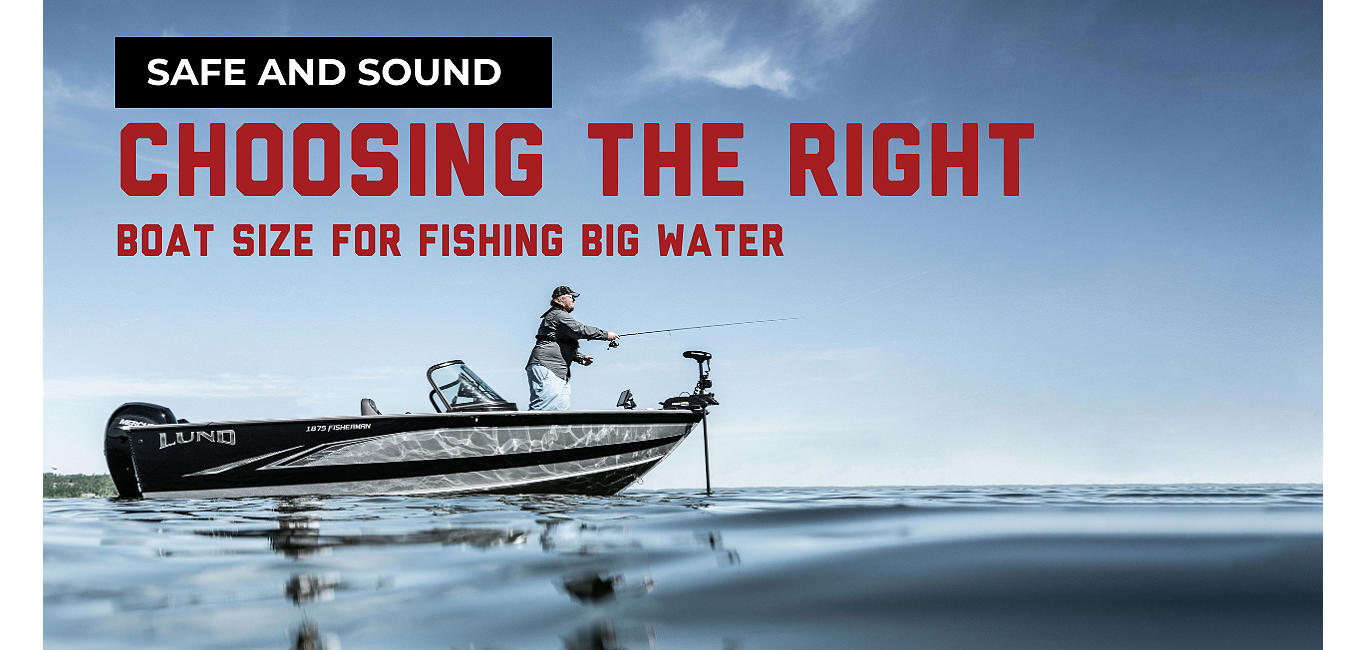
Understanding Fishing in Big Water
Fishing in big water presents in own set of unique challenges that stem from the unpredictable nature of these vast environments, characterized by rougher conditions, strong currents, and potential exposure to extremely rough waters.
In the realm of navigating and fishing in larger bodies of water, safety reigns supreme. The importance of prioritizing safety cannot be overstated. With greater expanses of water comes increased exposure to unpredictable weather conditions, stronger currents, and other potential hazards. Proper safety measures ensure the well-being of anglers, their crew, and the longevity of their fishing endeavors.
Navigating and fishing in larger bodies of water require heightened awareness and preparedness. From equipping the boat with essential safety gear to staying informed about weather forecasts and understanding the water conditions, every precaution should be taken.
Factors To Consider When Choosing Boat Size
Stability and Hull Design
In the realm of fishing in big water, a stable and seaworthy boat is of utmost importance. The unpredictable nature of large bodies of water demands a vessel that can handle the elements with confidence.
One key aspect of stability lies in the hull design. Lund's legendary IPS and IPS2 hulls enable the boats to slice through waves and rough conditions, maintaining their balance and preventing excessive rocking. Our deep-V hulls are renowned for their ability to cut through waves, providing a smoother and more stable ride in rough water.
A boat's freeboard height (the amount of space between the water line to the top of the gunnel), beam size (the overall width of the boat), and gunnel depth (how deep the sides of that boat are) can all play important parts in the seaworthiness of a vessel on big water.
Generally, boats designed for bigger water will have a tall freeboard height, large overall beam width, and deep gunnels to provide safety and stability. Many of Lund's fishing boats are specifically designed to take on bigger water with these enhanced features.
Size and Capacity
When considering fishing in big water, knowing your boat's capacity, both in weight and people, is important. The size and weight of the boat directly affect its performance and ability to handle the challenges posed by larger bodies of water.
A boat's length plays a significant role in determining its capabilities. Longer boats generally provide better stability and smoother rides, especially in rough conditions. However, it's essential to strike a balance between length and maneuverability, as longer boats may be less agile in tight spaces or when navigating around obstacles. These are critical factors if you plan to use the boat on smaller lakes.
Weight is another factor that impacts both performance and safety. A heavier boat can handle waves and currents more effectively. However, excessive weight may compromise speed and fuel efficiency. Understanding the weight limitations and ensuring proper weight distribution within the boat is crucial for maintaining stability and optimizing performance.
Finding the right balance between length, weight, and capacity ensures a vessel that can handle the demands of larger bodies of water while providing a safe and comfortable platform for anglers to fish from.
Power and Engine Performance
The necessary horsepower of a boat directly correlates with its ability to handle the demanding nature of big water. You can find the maximum horsepower of your boat on the coast guard capacity plate if the boat is under 20 feet long. Always follow these restrictions and the advice of your dealer when powering a vessel.
Adequate horsepower provides the thrust and speed required to navigate through waves and maintain control in adverse conditions. Many Lund boats are equipped with Mercury Marine outboards that offer several benefits, particularly in handling rough conditions. Backed by decades of marine power innovation and product leadership, Mercury FourStroke outboards deliver legendary performance and reliability.
Safety Features and Equipment
Safety should always be a top priority when venturing into larger bodies of water. One of the most fundamental safety considerations is having proper flotation devices readily available. Life jackets or personal flotation devices (PFDs) should be of appropriate size, easily accessible, and in good condition. Every occupant should have a designated PFD; wearing them on the water is strongly advised.
A boat will come equipped with a kill switch tether that should always be worn when the boat is under power. This ensures that if the driver falls out of the vessel, the motor will automatically shut off.
Communication systems play a vital role in enhancing safety on big water. Reliable means of communication, such as marine VHF radios or satellite phones, enable you to reach out for help or relay essential information when needed. Most Lund boats can also be equipped with top-of-the-line navigation and safety tools.
What Size Boat Is Safe for Offshore Fishing?
Smaller Boats, Bigger Water
When it comes to fishing in big water, it's easy to assume that only large boats can handle the demands of such environments. However, smaller boats can also be a viable option for anglers exploring these expansive bodies of water.
One advantage of smaller boats is their versatility. Their compact size means they are easier to caption, provide easier trailering and towing, and can fish smaller bodies of water that larger vessels don't have access to.
However, it's important to consider the limitations of smaller boats in big water. They may be more susceptible to wave impact and may not provide the same level of stability as larger boats. It's crucial to exercise caution and closely monitor weather conditions in smaller boats.
Despite these considerations, several smaller Lund aluminum boats and fish and ski models are well-suited for fishing in big water. For example, the 1875 Impact XS and the 1875 Crossover XS are popular for their durability and stability in bigger water. These boats offer features that enhance safety and performance in larger bodies of water, such as deep-V hulls for stability and ample storage space for gear.
Mid-size Boats
When fishing in big water, mid-sized boats offer a compelling balance between stability and maneuverability. These versatile vessels give anglers the confidence to navigate larger bodies of water while maintaining versatility in various fishing roles.
One of the key advantages of mid-sized boats is their stability. With slightly larger hulls, wider beams, and taller freeboards compared to smaller boats, they provide improved stability in choppy conditions. These features help ensure a smoother ride and enhanced comfort.
Their size balances agility and space, making them nimble enough to navigate tight spots while offering sufficient room for fishing activities. Whether casting in shallower areas or exploring deep reefs, mid-sized boats offer versatility to adapt to various fishing techniques and environments.
The Lund Tyee family fishing boat, the Fisherman, designed for trolling for salmon, walleye or trout, and the Baron, our flagship vessel for Great Lakes or big water, are trusted mid-sized boats. These 20–23-foot boats are known for their solid construction, reliable performance, and fishing-first design. They offer ample storage for gear, comfortable seating arrangements, and cutting-edge technology to aid navigation and angling.
If you’re concerned about stability and safety when fishing big water, choosing the right boat size can be the difference between an enjoyable day on the water and serious trouble. It's important to remember that when considering a boat for bigger water, safety should always come first.
Selecting the appropriate boat size ensures stability, seaworthiness, and the ability to manage the challenges of larger bodies of water. A stable boat provides a secure fishing platform and confidence for the caption when conditions turn rough. Seaworthiness ensures that the boat can navigate harsh conditions and withstand the unpredictable nature of big water.
Enjoying successful and safe fishing experiences in larger bodies of water hinges upon choosing the right boat size. By selecting a boat that matches the demands of big water, anglers can head out on big water confidently. Remember, safety is not an option—it is a fundamental aspect of every fishing excursion. So, equip yourself with the knowledge, skills, and proper equipment to ensure memorable and secure fishing experiences in the vastness of big water.
To explore your options, find a boat dealer near you, or use our build a boat tool to get started.
Get Updates
Sign up for our newsletter
